Miggo’s Pictar grip gives your iPhone standalone camera handling at a bargain basement price
posted Friday, April 22, 2016 at 5:59 AM EST
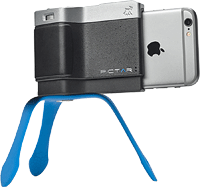
As an Imaging Resource reader, you're probably pretty knowledgeable and discerning when it comes to your cameras. Be that as it may, you probably won't be too surprised to learn that the most popular camera in the world -- at least according to photo-sharing site Flickr -- is Apple's iPhone, however. In fact, the iPhone is not only the most popular single camera -- four of the five most popular models used to share Flickr images are recent iPhone variants, and Apple itself is said to be the most popular single camera brand on the site, too.
The iPhone is the most popular camera, but ergonomics are poor
The obvious reason for this is that your iPhone is always with you. Of course, it certainly doesn't hurt that the camera in recent iPhone models has been improved so much over the years. For such a small sensor size, the iPhone camera has pretty decent image quality these days. And Apple has, over time, provided iPhone users with more control, too: Things like ISO sensitivity and shutter speed can now be controlled manually, for example.
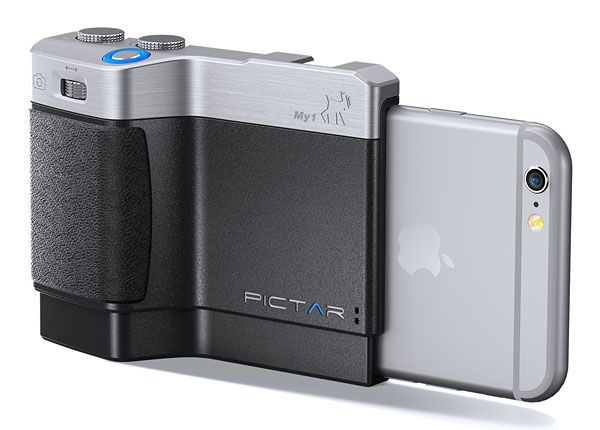
Still, compared to dedicated cameras the iPhone hardly provides the ideal shooting experience. Too many features are hidden in menus, and as a device which first and foremost is a phone handset, ergonomics are poor compared to a real camera. That's where a new iPhone accessory from the folks at Miggo comes in.
The Miggo Pictar housing aims to fix the iPhone's handling
Not familiar with Miggo? The Israeli photo gear maker launched in 2014 with the strap&wrap and grip&wrap, a duo of interesting straps which doubled as protective cases for your camera. Founded by the same folks behind camera bag maker Kata, which was eventually absorbed by Manfrotto, Miggo clearly knows how to brings products to market, and their new Pictar iPhone housing just hit crowdfunding site Kickstarter, following in the footsteps of the company's other products.
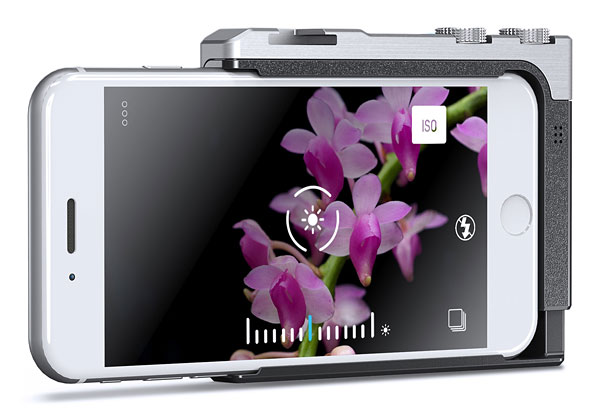
Pictar strikes us as rather interesting, if perhaps a little out of left field. What it does, in essence, is to graft camera-like controls onto the iPhone, aiming to improve the shooting experience. And we should be clear about something from the start: With the possible exception of reducing blur from camera shake (thanks to better ergonomics and a more secure grip), Pictar won't improve your photos one iota. You're still going to be shooting using the exact same iPhone sensor, lens and processing.
Pictar is priced very affordably indeed
But with bargain-basement pricing of $90 list, that's perhaps understandable. You'd struggle to find a camera which offered noticeably better image quality than your iPhone at this price point, and while you can find standalone cameras with stabilized optical zooms for under $100, you'd have to sacrifice on performance to get the added versatility of a zoom lens. All of the most affordable name-brand cameras these days are based around CCD image sensors, which provide very sedate burst capture, and are also limited to 720p video capture at relatively low frame rates.
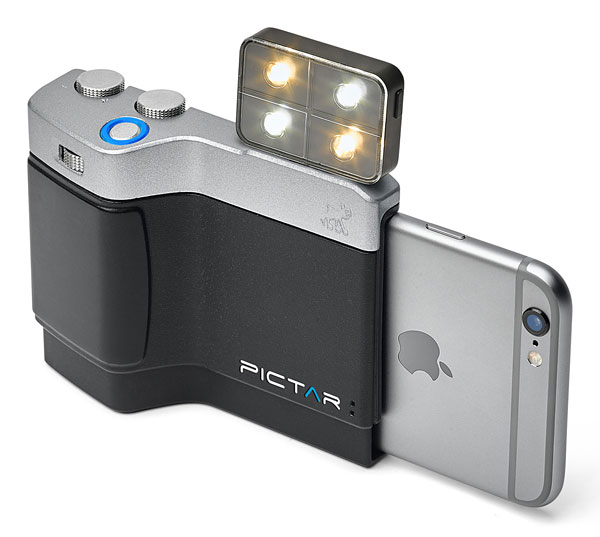
But while Pictar won't improve your images, it will make shooting them a rather more pleasant experience. That's because you don't have to interact solely through the LCD monitor, perhaps rifling through menus for the features you're after.
Dedicated, programmable aluminum dials and buttons
You have a choice of four dedicated controls, each crafted from aluminum. These include a shutter button complete with half-press for focus / exposure lock, a zoom dial which also doubles as a clickable button to switch between front and rear cameras, an exposure compensation dial, and what the company calls a "smart dial". This last dial, by default, controls your shooting mode with options such as landscape, portrait, snow or manual, but these aren't marked on the dial itself, but rather shown on the phone's LCD screen.
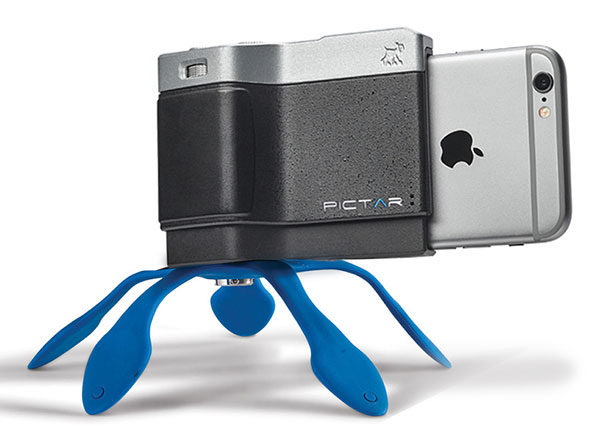
These controls are doubly interesting because of the manner in which they work. For one thing, Miggo tells us that each control can be reconfigured to control whichever camera feature you want. For another, the method of communication between controls and phone is very unusual indeed.
Pictar communicates using high-frequency audio
When we were first briefed on Pictar, we expected to hear that it communicated with the iPhone using Bluetooth Low Energy, but apparently Miggo felt that this still used too much power. (Likely also a consideration was that the necessary Bluetooth chipset also added too much cost to the bill of materials for the device.)
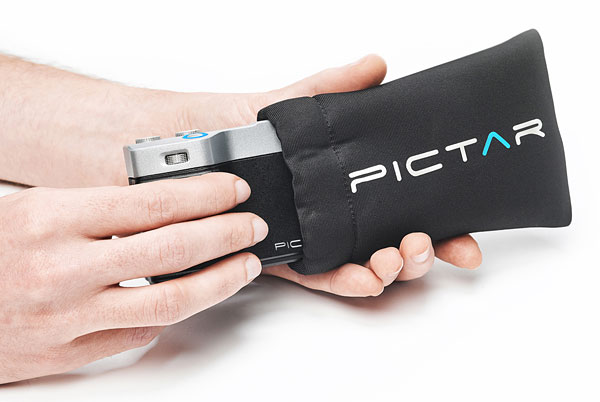
Instead of Bluetooth, Pictar communicates with the phone using high-frequency sound in the region of 18.5 to 20 khz. This range is right at the very upper end of what's typically stated for human hearing, and likely won't be audible to many of us, particularly if we've spent too much time listening to loud music. If you have good hearing, though, you may well be able to pick up on these sounds.
The iPhone's microphone can also pick them up just fine, and so when each control is used on the Pictar grip, the phone interprets the sound to determine which control was used (and how far it was turned or pressed), then responds appropriately. We're told that this still works well even in noisy environments -- Miggo founder Rafy David tells us he's tried the device while listening to Metallica at high volume without issues -- but since there's no way to communicate back from iPhone to grip, it does raise the potential for problems if two Pictar units are used in close proximity.
Slip in your phone, then attach a video light or tripod
There's also a cold shoe mount on the top of Pictar which can be used to attach video lights or other self-powered devices. (Or perhaps even a strobe which keys off the light from the iPhone's own LED flash.) And on the bottom of the grip is a tripod socket, allowing you to tripod-mount your iPhone. There's also an attachment for wrist or neck straps, and a wrist strap is included in the product bundle along with a case.
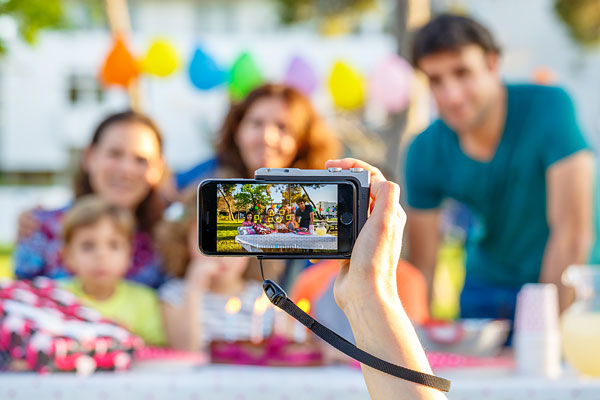
So how does your iPhone attach to the Pictar housing? Well, the answer is that the device slots into Pictar's rear side, held in place by friction. There's a grippy material lining the base of the slot, and at the top is a spring-loaded friction clip which holds the phone snugly.
Compatible with most -- but not all -- recent iPhone models
This design does mean that your phone must be within certain size limits, however, and only the iPhone 4, 4s, 5, 5s, 6 and 6s are currently compatible with Pictar. [Update 2016/04/26: Miggo has now announced that it will be making a separate variant of the Pictar device for the iPhone 6s Plus.] And there's also the communication method to consider. Apple's camera app alone clearly can't work with Pictar since it has no way to interpret the audio signals from the device, so Miggo has prepared its own app.
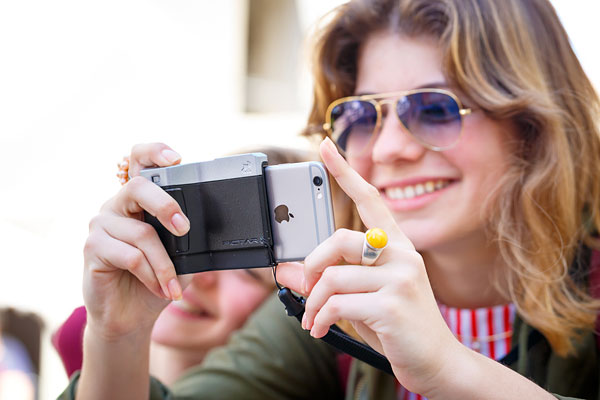
This is provided free of charge to Pictar owners, and it provides the relevant interface between grip and camera. It also has an on-screen virtual wheel, giving yet more control access. And as noted previously, it can be reconfigured to allow you to tailor the controls to the features you use most often. Want to use the smart dial for another purpose, for example? If so, you can.
Miggo tells us that Pictar and its related app should work with future models too, however if Apple decides to change the size of its phones too significantly, that will obviously limit your upgrade potential. iPhone models before the iPhone 4 aren't compatible, and nor is the iPhone 5c.
A product with consumer rather than enthusiast appeal
Perhaps the biggest question mark over Pictar is why you'd buy one instead of a standalone camera. After all, we're talking about a fairly bulky accessory here, and one of the key reasons that so many casual photographers switched to the iPhone in the first place was to avoid the added bulk of a separate camera. While Pictar is small enough to fit in a pocket if it's not too tight, and it's predominantly-plastic body is very light at just 60 grams, it's still quite a bit bigger than a standalone camera like, say, a Sony W800 or Nikon L32 at 3.9 x 3.5 x 1.2 inches.
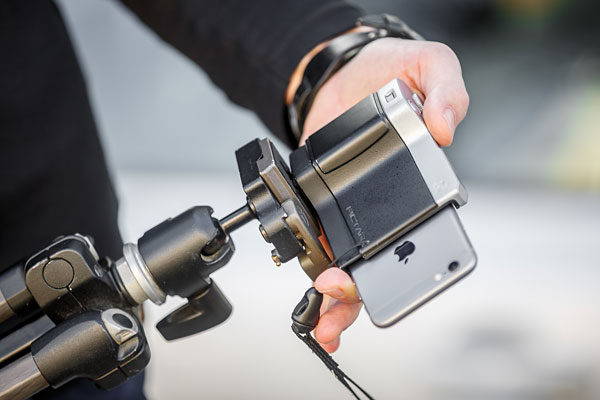
The answer, for more experienced photographers, is that this product isn't really aimed at you. It's intended for less-experienced snappers who are satisfied with the image quality of their iPhone, and happy to live with the limited versatility of a fixed-aperture prime lens, but who crave better handling and quicker control when shooting their photos. (And doubly so if in cold environments where gloves are a must.)
Available this November through Kickstarter
And apparently it's an idea with some appeal for that group, because the company has already found 800+ backers in just the first couple of days, with the crowdfunding campaign over at Kickstarter having already nearly reached its US$100,000 goal for production to commence.
Estimated to be available this November, the Miggo Pictar grip can be preordered on Kickstarter for US$90. More details can be found on the Kickstarter project page.